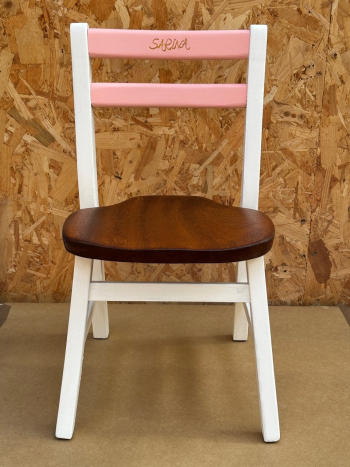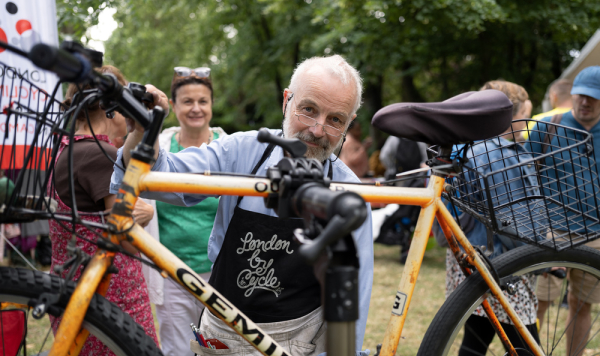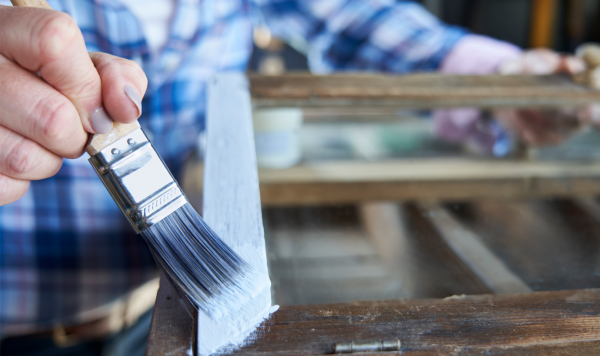You know that dusty three-legged chair you saw on your street corner recently? Or that rickety old table? Yes, the one that’s been shamelessly dumped on the side of the road waiting for someone to rescue it?
Well – although furniture shouldn’t be left on the public highway in the first place – a lot of good can be found in unwanted second-hand furniture.
In the UK, around 22 million small furniture items are thrown away each year when they become damaged. That’s why, empowering people to reuse or restore furniture is essential to tackling unnecessary waste and moving to a circular economy.
From high quality materials to intricate woodwork, most preloved furniture has sought-after attributes that simply need a bit of TLC before they’re ready to be used again.
You just need to know what to look out for, be willing to learn, and have a creative or inquisitive mind.
That’s where Hive Curates (previously Artist Hive Studios) come in!
They are a group of makers and artists based in Edmonton, who have been running a series of ‘Repair, Restore, Reuse’ workshops this year, which we are supporting through the North London Community Fund. We chatted to Huren Marsh, their designer-maker, about the fundamentals of restoring waste furniture.
What made you decide to go into repair and sustainable design?
I am becoming increasingly concerned about the role of designers in inadvertently creating more waste. Generating waste is a by-product of what the design industry does – they say ‘that’s now old or bad or out-of-date, you need a shiny new one!’ It’s consumerism.
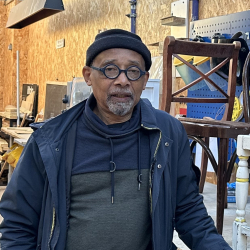
I wanted to try and change that attitude and show the value in used items through my work. If we found a 150-year-old household item we wouldn’t chuck it in the bin and regard it as junk, we would call it an antique! Attitudes can be quite contradictory in this space and I want to do what I can to challenge them and increase confidence in repair and reuse.
Another driver for me was the cost-of-living crisis – people can’t afford to keep buying new but they might lack the skills or knowledge to recognise what they can do with what they already have. That was the purpose of the ‘Repair, Restore, Reuse’ workshops we ran: to encourage people to see the value in their broken or tired-looking things. Locals brought in small furniture items which we transformed together – and the beauty of this was it protected people’s bank accounts and the planet’s resources, while also preserving the memories that come with personal belongings.
What would be your tips for people starting their first repair project?
- Don’t be too ambitious with your first project. If you set yourself an easy task, it will help develop your confidence.
- Embrace getting your hands dirty! You’ll need certain facilities and tools to strip the furniture down so have a look for a local studio or workshop like Hive Studios in Edmonton.
- Use YouTube – you can find almost everything you need there in the form of accessible step-by-step guides etc.
- Just try it! Your first DIY project is about trying, or watching someone else do it and realising it is within reach. Confidence is the one thing that cannot be taught – but you can build it up.
What should you look for in second-hand shops, if looking for furniture to restore?
- The quality of the material. It’s not always easy to know the exact quality of the piece until you’ve stripped off the paint and can see the bare bones. However, a good thing to look out for in furniture is whether it’s made of solid wood like for oak and ash you may see those familiar wood grain lines even if it has been painted over.
-
Look for the potential. If you find something you like, the chances are it has potential as long as it’s not irrecoverably damaged. Think about what the original use of the item was and whether you can use it the same way or do something different by adding another function to it.
Image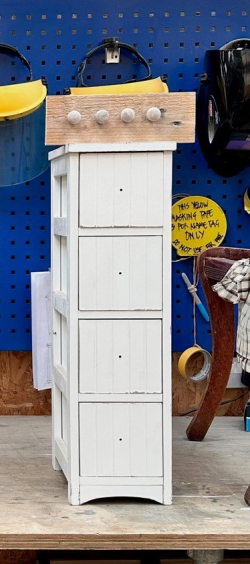
For example this chest of drawers is great for storage in the hallway – I picked it up because it’s simple and some parts are solid wood rather than plastic which usually cannot be restored. Aside from needing some more colour and freshening up, I have a vision to take it a step further and add a new wider wooden top. I would fix a pole to the wide top to support it and attach a hook fixture where you can hang your coat and scarf.
- Look for the same item online to compare the price and find out more about it. I have a great tip for this – download the Google Chrome app, take a photo of the item and select the image search function. This can enable you to find the same piece, learn about the style and materials and compare it to similar items being sold on line.
What are the common myths about repairing furniture?
The first one is that it is something that requires doing a professional job. It’s not always a professional job – in fact 15-25% of repairs can be carried out by anyone as long as they’ve done some research and have the right attitude. There is a fair amount of acceptability in something not having to achieve that perfect finish. I think that’s how ‘shabby chic’ became a thing.
Another myth is around health and safety and people believing it doesn’t matter, especially since furniture repair has become more accessible through digital channels. That’s not true – you must always consider possible health and safety risks. If they are too big, just don’t go there.
Lastly, many people think they need to have all the knowledge before trying to repair or restore furniture. Actually, you learn a lot on the job. Going along to a community workshop can really empower you to tackle DIY and other projects confidently.
Do you know, any organisation that are succeeding at pursuing recycling or upcycling as a good model for waste reduction?
Yes I am very inspired by these two:
- Made out of what is a community of creatives who are transforming waste into beauty and utility, making sure materials are kept in circulation for longer.
- Bloqs is the UK’s largest open-access factory and maker space where you can rent by the hour. This is geared towards people with some experience and professionals.
Lastly, can you tell us about a project you enjoyed supporting through your ‘Repair, Restore, Reuse’ programme?
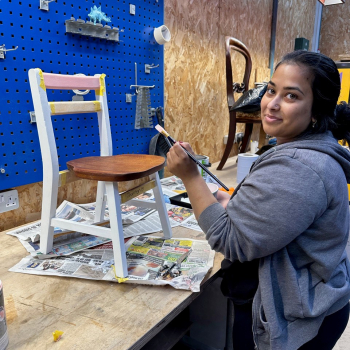
During our ‘Repair, Restore, Reuse’ workshop, I really enjoyed restoring a child’s chair I found during lockdown. I worked with a local resident called Shahren on this, for her friend’s 6-year-old daughter. She did such a good job repainting it while leaving the beautiful teak seat just treated with Danish oil that I finished it off by painting the child’s name “Sakina” in gold on the back rail and delivering it to her home. The finished item was a surprise for her and the little girl was thrilled.
The process of bringing new life into unwanted furniture is closely tied in with emotion and memory – that’s what makes it so enjoyable.
